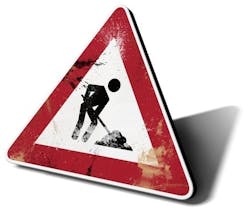SAFETY: Investigation starts on crane collapse at Tappan Zee Bridge
State and federal officials are investigating what caused a huge construction crane to collapse across the Tappan Zee Bridge north of New York City, an accident that somehow caused no serious injuries but added to a list of crane wrecks in recent years that have prompted initiatives to improve safety.
The state Department of Labor and the federal Occupational Safety and Health Administration (OSHA) are among the agencies probing the accident, which blocked traffic on the vital Hudson River crossing for hours and kept a lane closed through the day July 20.
The crawler crane, manufactured by the Manitowoc company, of Wisconsin, was less than a year old, according to Damien LaVera, a spokesman for Tappan Zee Constructors, the consortium of contractors building a $3.9 billion replacement for the Tappan Zee.
The crane was stationed on the deck of the new bridge, which is being built parallel to the old one, when its 250-ft-long boom collapsed.
There are 28 cranes in operation on the bridge project to be completed by 2018—many much larger than the one that toppled.
As a result of a series of crane collapses over the last few years that occurred in New York City, Mayor Bill de Blasio created a special task force that came up with new safety recommendations for cranes operating in the city. They included a recommendation that cranes be equipped with a "black box" that would indicate whether a crane had lifted too heavy a load. The panel also suggested that cranes be equipped with so-called "anemometers" to measure wind gusts.
